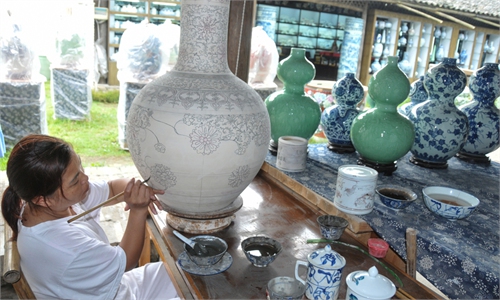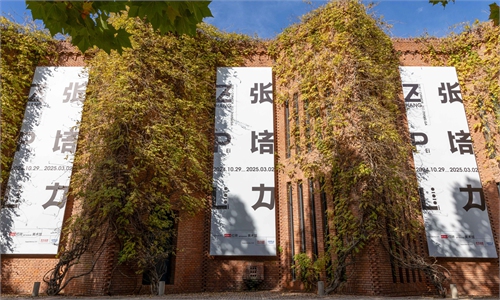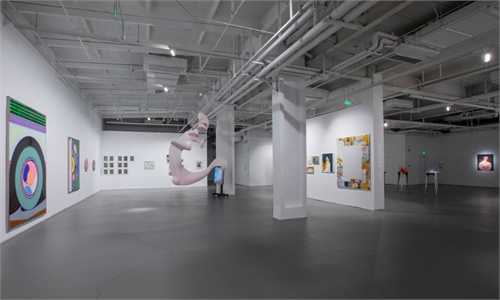ARTS / CULTURE & LEISURE
Red meets green: Millennial beauty of Honglücai Porcelain
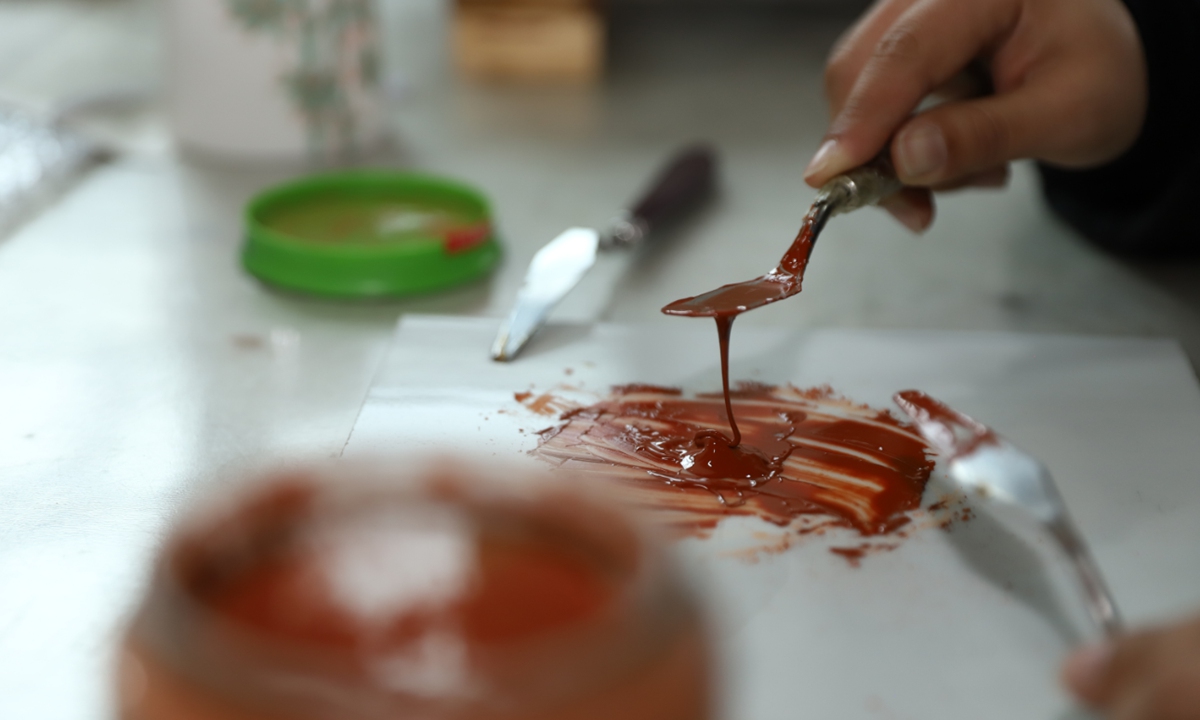
A craftsman prepares pigments used on Honglücai Porcelain. Photo: Courtesy of Zhang Rui
In the long history of Chinese porcelain art, one type of porcelain stands apart. Its appearance is akin to the first splash of vibrant color on a monochrome canvas, laying the foundation for the development of colored porcelain. This is Honglücai Porcelain, born during the Song (960-1279) and Jin (1115-1234) dynasties.Along the banks of the ancient Grand Canal, craftsmen at the Dezhou Kiln drew inspiration from the freehand brushwork style of Song Dynasty paintings and the folk art of New Year pictures in northern China. Using brushes dipped in red and green pigments, they painted patterns on monochrome glazed porcelain, which had been fired at a high temperature of around 1,300 C. These painted works were then fired a second time at approximately 800 C to complete the process. This groundbreaking technique pioneered the art of overglaze porcelain painting in China.
Today, at the Museum of Honglücai Porcelain from the Dezhou Kiln, located in Decheng district, Dezhou, East China's Shandong Province, a set of porcelain figures adorned with dragon-patterned gowns quietly stands, captivating visitors. These works, which blend traditional craftsmanship with modern aesthetics, are the creations of Liu Yu, a post-1990s inheritor of intangible cultural heritage, and her team.
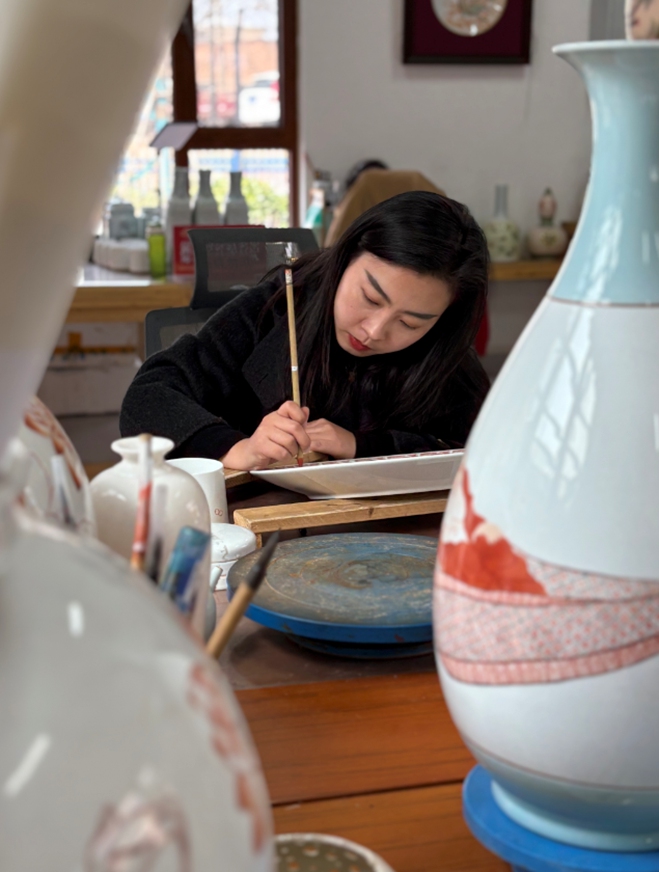
Liu Yu, a representative inheritor of Honglücai Porcelain from the Dezhou Kiln, paints Honglücai Porcelain pieces in her studio. Photo: Courtesy of Sun Yi
Liu first encountered Honglücai Porcelain from the Dezhou Kiln during her university years. When she saw figurines from the Song and Jin dynasties at a museum, she was deeply moved. "For the younger generation, the combination of red and green is often associated with garishness, but these works, timeworn, shattered that perception for me," she said. The red, reminiscent of the radiant dawn breaking in the East, exudes passion and vibrancy; the green, akin to the tranquil jade hues of mountain landscapes, embodies purity and freshness. Together, they create a dynamic world on the porcelain surface, leaving Liu utterly enchanted. It was then that she embarked on her journey of exploring and passing on the legacy of Honglücai.As she explored the historical and artistic significance of Honglücai, Liu discovered its unique characteristics. "Dezhou prospered due to its location along the ancient Grand Canal. The area didn't produce porcelain materials but relied on canal transportation. This is where the agrarian culture of the Central Plains collided with the nomadic culture of the steppes, and where northern and southern porcelain-making techniques converged."
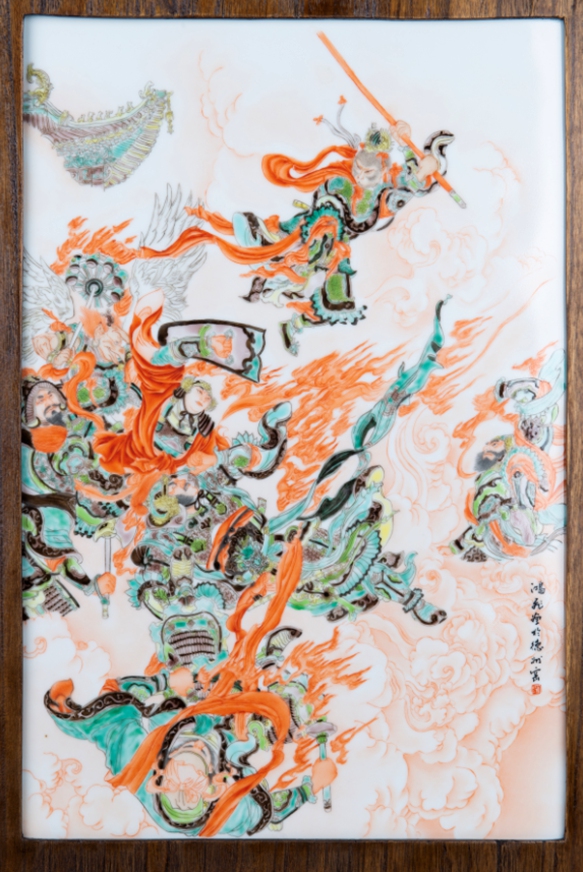
A porcelain panel painting by Liu Hongfei depicts the Monkey King locked in fierce battle with celestial soldiers. Photo: Courtesy of Chen Qinghui
The deeper her research went, the more Liu felt the weight of her responsibility for preserving this heritage. However, mastering the art was no easy feat. The first challenge was preparing pigments for painting. Vermilion red pigment required precise blending with frankincense oil, and the labor-intensive hand-kneading process took one to two hours, often leaving her fingernails raw and painful. Practicing brushwork was equally demanding, involving monotonous and repetitive drills of drawing lines and circles. During painting, the red lines had to flow like moving clouds, and the green fills needed to be even in thickness - any slight deviation could affect the final outcome after firing."Honglücai Porcelain from the Dezhou Kiln is not just a craft; it embodies the innovative spirit of the craftsmen of its time." As representatives of the younger generation of intangible cultural heritage inheritors, Liu and her team have infused innovative spirit into contemporary Honglücai, developing the concept of "comprehensive decoration for Honglücai Porcelain from the Dezhou Kiln." They drew from the meticulous standards of ancient Jingdezhen polychrome techniques to refine their designs, blending modern sculpture with traditional overglaze painting to create innovative pieces like "Graceful Elegance," and incorporated the art of filigree and gilding to develop tea sets and jewelry that blend antique charm with modern sophistication. In Liu's view, for Honglücai Porcelain to go further, it must not merely remain as an artwork in a display case, but should enter people's daily lives, allowing more people to encounter this touch of millennial color.
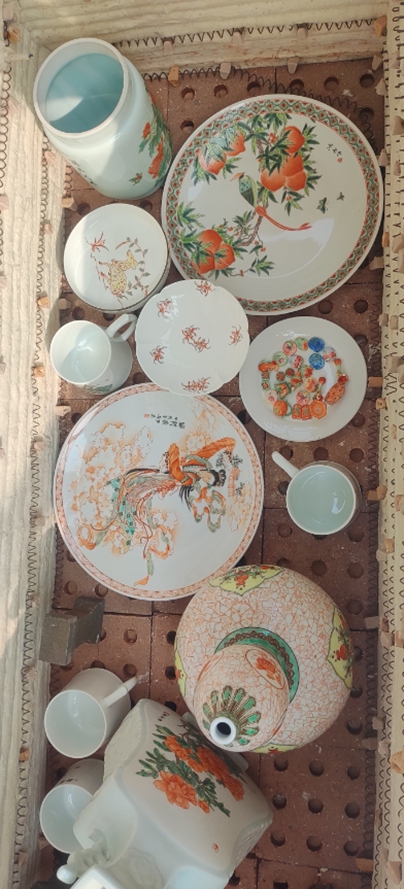
Honglücai Porcelain pieces after undergoing a second firing process Photo: Courtesy of the interviewee
In recent years, the local government has taken proactive steps to promote the protection and inheritance of Honglücai Porcelain. "We will strengthen our efforts to preserve and promote this heritage, providing more opportunities for international cultural exchanges for this representative project of intangible cultural heritage. Our goal is to bring Honglücai Porcelain from the Dezhou Kiln to the global stage and let this ancient craft shine even brighter," said Liu Guizhi, a member of the Standing Committee of the Decheng District Party Committee and deputy district head.